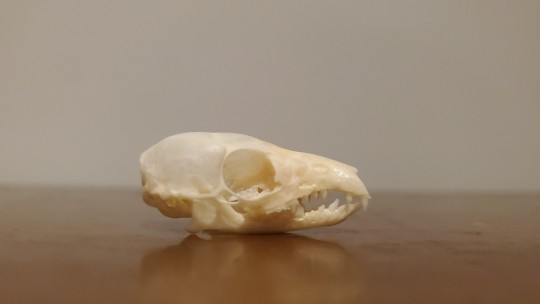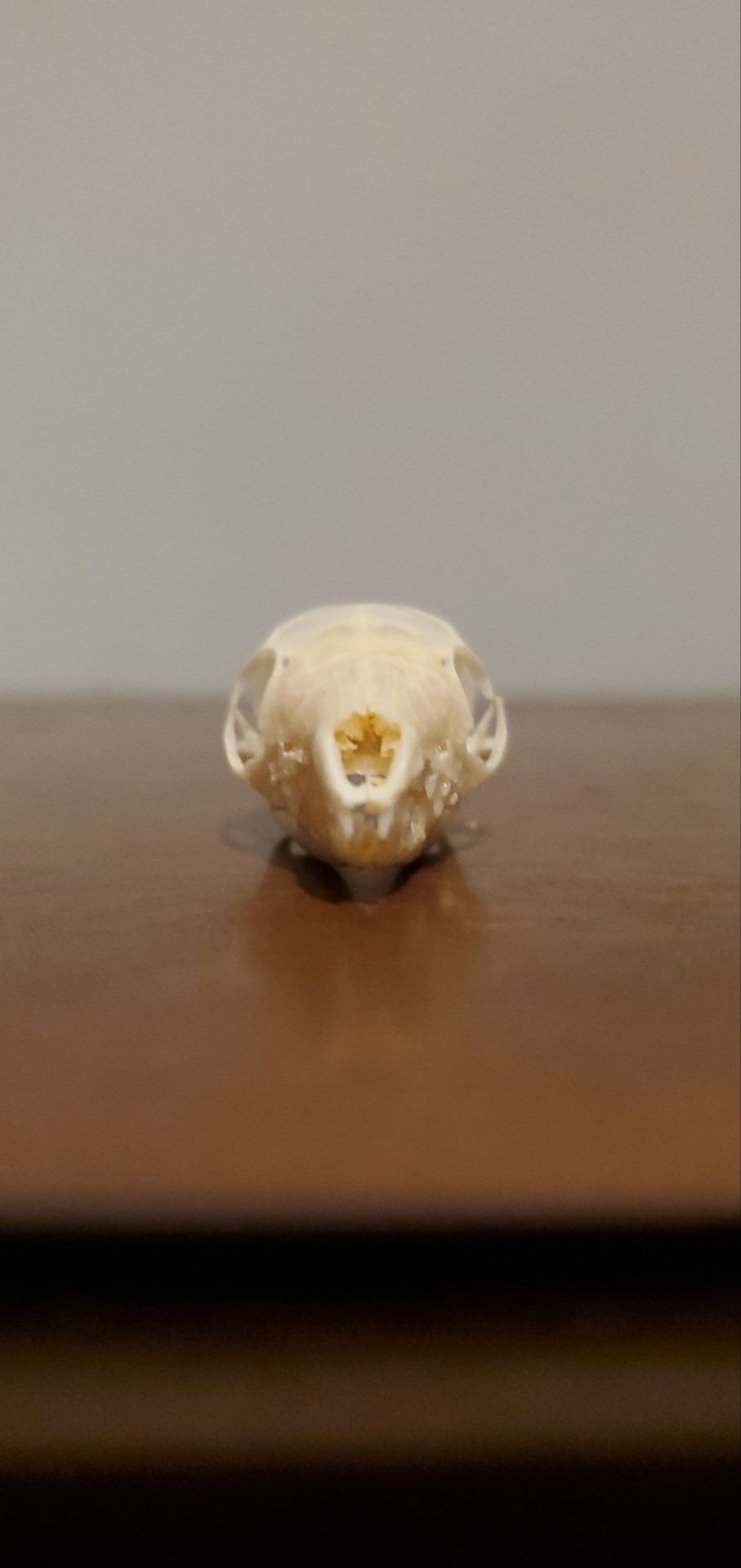#tupaia
Text

Large Treeshrew (Tupaia tana), family Tupaiidae, Borneo
photograph by Chien Lee Wildlife Photography
261 notes
·
View notes
Text
63 notes
·
View notes
Text
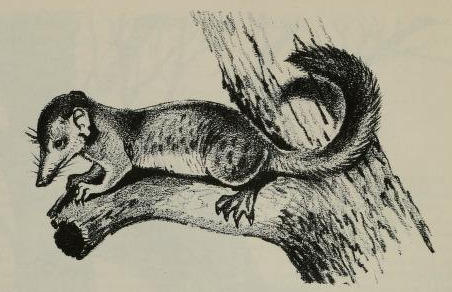
Tupaia. From The First Mammals, written/illustrated by William E. Scheele. 1955.
64 notes
·
View notes
Text
Female Long-footed Tree Shrews sometimes form consortships with one another as well; these typically last longer than heterosexual consortships (several months as opposed to several hours) and involve grooming, lying on or next to each other, and sleeping together.
"Biological Exuberance: Animal Homosexuality and Natural Diversity" - Bruce Bagemihl
#book quote#biological exuberance#bruce bagemihl#nonfiction#long footed tree shrew#tupaia longipes#consortship#grooming#sleeping
0 notes
Text

Large treeshrew (Tupaia tana)
By: Pat Morris
From: The Complete Encyclopedia of the Animal World
1980
#large treeshrew#treeshrew#mammal#1980#1980s#Pat Morris#The Complete Encyclopedia of the Animal World (1980)
55 notes
·
View notes
Text

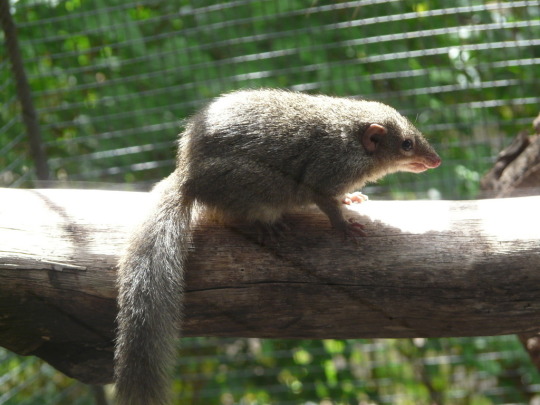


Common treeshrew
Tupaia glis
Family Tupaiidae, order Scandentia, grandorder Euarchonta, superorder Euarchontoglires
Another tree shrew! This time, one of the more well known ones. It’s one of the larger tree shrews, at an average of 16-21 cm body length and 12-20 cm tail length. The average weight is 190 grams.
They are diurnal and have territories which they frequently mark with scent glands in the chest and scrotum. Territories of males and females will often overlap, while male and male or female and female territories overlap far less often. Territories of two adults with high overlap are thought to be indicative of a stable pair. Juveniles’ territories are thought to overlap with family members until they are grown.
The history of this animal’s classification is very interesting. They were first thought to be in Sorex, with shrews. Their current classification is still not entirely certain.
Because of their close relationship to primates and developed senses of vision and hearing, these guys are used by researchers as animal models for human disease.
@jackalspine @fifiibibii
8 notes
·
View notes
Text
Book 50: Sea People
The random number generator created 99X (I forgot to put in the last number and can't remember what it was) which is History and Geography > Oceania and elsewhere. Two interesting books were available: Selkirk's Island about a real life Robinson Crusoe, or Sea People: The Puzzle of Polynesia. I went with Christina Thompson's Sea People.
Sea People explores the history of Polynesia and the mystery of how humans populated a triangle of ocean stretching from New Zealand to Hawaii to Easter Island with some islands thousands of miles from each other. It goes through the "discovery" of the islands by Europeans, the first written accounts of their history, through Polynesian oral traditions, scientific attempts to decipher the origins, attempts to recreate sailing to the islands, and finally modern science's input.
Yes, the Royal Society makes an appearance, in that they needed somewhere to study the Transit of Venus near the equator in 1769 and just as a ship returned telling of a wonderful island called Tahiti. There they were able to talk with the natives and learn a bit about them. Most importantly they met a learned man named Tupaia who agreed to go with them on their voyage home where they encountered other groups of islands like New Zealand where he was of immense help translating and advising on proper behavior. Most intriguingly he made a map of all the islands he had heard of, and it remains a mystery to this day how to interpret it. It's not strictly a Cartesian coordinate map and many people have tried to explain how the islands are arranged.
The book mentions Maui and his amazing fish hook, and a guy who humped a pile of sand to make humans (best origin story yet). Funnily enough, the best, most learned scholars of the 19th century thought that Polynesians were Aryan in origin. That's real Iranian Aryans- not phony baloney blonde Nazi Aryans. However science of the early 20th century tried to go by "race" for the origin by measuring facial features and using, I swear to god, a skin color chart like that Family Guy terrorist meme. Obviously that failed for so many reasons. Currents to Polynesia generally run East to West so a lot of people, including Thor Heyerdahl thought the people must have come from South America. Unfortunately for them, computer models show that Kon-Tiki only made it to Polynesia because it was towed out to a good current, and that natural rafts would not have made it that way. In fact it showed it was nearly impossible to drift to Hawaii or New Zealand and that meant the Polynesians who settled there must have been heading in a general direction of exploration to get there.
Spoiler alert modern DNA shows that Polynesians came from Taiwan via Melanesia to Polynesia though they're still working out the details of how long they stayed in Melanesia and when they settled various islands. And they're perfecting interesting techniques like looking at the rat DNA of the ubiquitous stow-aways from Polynesian settlement.
BEST LINE: "From the perspective of the twenty-first century , a lot of this work looks creepy, and for good reason."
SHOULD YOU READ THIS BOOK:
I wish it had some maps of Polynesia and Melanesia and Micronesia so I could have had a better idea of keeping those straight, so look that up on wikipedia before you read, unless you already know, in which case kudos! But I do suggest reading the book. It's very interesting from a historical and science history perspective.
ART PROJECT:
The 20th century investigators took a lot of photographs of Polynesian natives and this is a drawing of one of them.

#52books#52booksproject#royal society#polynesia#sea people#christina thompson#tahiti#joseph banks#transit of venus
10 notes
·
View notes
Text

I think most people are aware of the fact that humans are related to other primates such as chimps, gorillas, mandrills and probably even Curious George. As a matter of fact, humans ARE primates, which means we share a common ancestor with all other primates. The order Primate includes many species other than just humans and animals that we usually call "monkeys", it also includes lemurs and some other minor families.
However, what I was curious to know was what animals are the most closely related to humans after the primates. To find out, we need to go up the ranks in our phylogenetic tree. As seen on the image on top, primates are part of the mirorder (like an order, but bigger) Primatomorpha, which includes the order Dermoptera (yes, Greek nerds, this means something along the lines of "wing skin"). The order Dermoptera consists entirely of colugos, which are also known as flying lemurs. Despite their name, they are not lemurs and despite their appearance, they are not flying squirrels. They just happen to also be equipped with a patagium (the skin membrane they use to glide) due to convergent evolution. While this is surely interesting, colugos are quite obscure animals and I was looking for a group of animals that would be more "commonly known", even if a bit less related to humans.
We can go even higher up in our phylogenetic tree and see that Primatomorpha are part of the grandorder (like a mirorder, but even bigger) Euarchonta and have a sister order, Scandentia. Animals in the order Scandentia are referred to as "tree shrews", but again, the name is misleading because while they are indeed arboreal, they are not shrews. The image above has one example of these creatures, a tupaia, and while they are cute and all, they are still not what I would call a "commonly known animal". Also, note that the position of the order Scandentia in the evolutionary tree is actually debatable as some researchers place them as a sister clade* to the Glires.
Going one more rank up in our phylogenetic tree, we see that Euarchonta are part of the superorder (like a grandorder, but bigger, you get the idea) Euarchontoglires, which includes the clade Glires. Within this clade are found the orders Lagomorpha and Rodentia, which are both comprised of very well known animals, such as rabbits and rats. I think it's pretty cool to think that those animals are quite closely related to primates, and therefore, to humans. Probably this is why they are (sadly) used for animal testing of medicine and cosmetics, although they are also probably used because of economical reasons.
* I will one day make a post about this word, it's actually pretty interesting.
#animals#primates#humans#colugo#order#clade#dermoptera#primatomorpha#scandentia#euarchonta#euarchontoglires#glires#phylogenetic tree#phylogeny
8 notes
·
View notes
Text
🩶
Le Gris, couleur de la Neutralité et de la Maturité, véritable régulateur optique, référence de la Sobriété et du Raffinement, d’Élégance et d’Imperturbabilité, de la Lassitude et de la Maîtrise de Soi, représentant le Sérieux, le Futur et la Modernité, coloris du Métal, du Mercure et lié à la Lune et aux Orages, sera notre « couleur » de ce matin.
À mi chemin entre le Noir, trop drastique, et le Blanc, trop harmonieux, le Gris est par excellence la couleur de la Neutralité. Tout comme ses origines, il n’est pas, lui aussi, considéré comme une « couleur », au sens strict du terme. Sa neutralité fait qu’il n’a aucun effet psychologique sur l’être humain. En fait il serait plutôt une « intensité lumineuse » puisqu’il harmonise toutes les couleurs auquel il est mélangé ou associé (d’où la notion d’Équilibre qu’on lui attribue). Il est cependant possible de créer du Gris à partir d’autres couleurs, et on peut lui trouver différentes teintes tel que le Gris Perle, l’Argentée ou le Gris Anthracite.
Sobre et Élégant, il est la teinte que l’on retrouvera le plus dans le Vestimentaire. Habits, Accessoires, Chaussures, Teinture…tout est bon à porter avec le Gris, qui mettra en avant les couleurs qui lui seront ajoutées. C’est la seule « couleur » qui sied à tout le monde.
Son Harmonie naturelle fera de lui une « valeur sûre », que ce soit dans le domaine du Design, de la Décoration d’intérieur, en passant par la Mode, ou encore l’Art.
La Lune, appelée aussi la Dame d’Argent, l’Acier ou encore l’Ennui sont parmi les nombreuses références que l’on assigne au Gris, mais j’ai personnellement préféré attribuer à Hautea Tupaia, votre candidat #10, les caractéristiques du fulminant Dieu « 𝐹𝑎𝑡𝑢𝑡𝑖𝑟𝑖 ℎ𝑎𝑟𝑢ℎ𝑎𝑟𝑢 𝑖 𝑡𝑒 𝑟𝑎’𝑖 », dieu tahitien des Orages et Ouragans, et Souverain de la Foudre.
N’oubliez pas de voter pour Hautea Tupaia, dixième candidat à l’élection « 𝑀𝑖𝑠𝑡𝑒𝑟 𝑇𝑎ℎ𝑖𝑡𝑖 », le 07 Octobre 2023, et de vous arborer de Gris, dans les jardins de la Mairie de 𝑃𝑎𝑝𝑒𝑒𝑡𝑒.
#mistertahiti2023 #hauteatupaia #candidat10 #gris #kaleisillustrations #polynesiefrancaise

#art#artwork#digital aritst#digital art#artists on tumblr#tumblart#ipaddrawing#ibispaintx#procreate#portrait#polynésie française#tahiti
1 note
·
View note
Text
Random Real Thoroughbred: MAIESKI
MAIESKI is a horse born in Brazil in 1988. By ZIRBO out of TUPAIA.
Link to their pedigreequery page: https://www.pedigreequery.com/maieski
0 notes
Text
0 notes
Text
TURISIAN.com – Kalau Sobat Turisian berkesempatan berkunjung ke Kabupaten Tanah Laut, Kalimantan Selatan, wajib coba naik ke Gunung Birah. Para pehobi mendaki gunung pasti senang datang ke sini. Dari atas puncaknya, kalian bisa berkemah sambil menanti momen sunset dan menikmati panorama alam yang memukau.
Gunung tersebut terletak di Desa Kandangan Lama, Kecamatan Panyipatan, Kabupaten Tanah Laut, Kalimantan Selatan (Kalsel). Luas kawasannya mencapai 1.589,02 ha dengan puncak tertingginya berada di ketinggian 275 mdpl.
Kontur Gunung Birah memiliki bentuk lahan bermacam-macam. Mulai dari lereng yang curam dan area perbukitan dengan pola-pola bekas abrasi air dan angin.
Objek wisata pegunungan ini populer sebagai tempat camping atau untuk sekadar berkunjung melihat momen matahari terbenam. Cocok juga buat spot healing melepas rasa penat dari rutinitas. Jamin pikiran Sobat Turisian akan fresh kembali.
Tak hanya itu, Gunung Birah pun kerap menjadi tempat kegiatan kirab bendera pada peringatan Hari Kemerdekaan Indonesia dan Festival Bukit Birah. Juga pernah menjadi lokasi dari kegiatan World Clean Day pada 2020 silam. Acara tersebut menghasilkan 1,1 ton sampah yang berhasil peserta bersihkan.
Baca juga: Gunung Kayangan Tanah Laut Sajikan Pemandangan yang Memanjakan Mata
Selain sebagai destinasi wisata alam, gunung ini pun menjadi saksi bisu peristiwa sejarah yang berkaitan dengan perjuangan penduduk melawan penjajah. Di mana tempat ini menjadi lokasi keluar masuk warga.
Keragaman Flora dan Fauna di Gunung Birah
Ketika berkunjung ke sini Sobat Turisian akan menemukan keragaman flora dan fauna di sekitar area gunung dengan dominasi Sengon dan Birik. Ada pula Bunga Bangkai Amorphophallus titanum, Aren Arenga pinnata, Bambu Tamiang Schizotachyum blunei Ness.
Kamudian ada Bulan Nanduk Diosphycos marcophylura, Gamal Gliricidia sepium, Gungkuang Pachyrhizus erosus, Halaban Vitex pinnata, Jelutung Dyera costulata, Jengkol Archidendron pauciflorum. Ketapang Terminalia catappa, Kujajing Ficus fistulosa Reinw, Loa Ficus racemosa, Mampan bini Cratoxylon arborescen. Serta Nangka Arthocarpus integra, Rotan Ampar Tikar Calamus finlaysonia, dan Singkuang Dracontomelon dao.
Sementara untuk aneka fauna yang terdapat di Gunung Birah, yaitu satwa liar seperti Burung Binti Ciconia stormi, Burung Bubut Centropus sinensis. Ada juga Burung Cuit Dicaeum throchiluem, Burung Elang Accipitridae, Burung Hantu Strigiformes, Burung Kutau-kutau Maeronus gularis. Burung Punai Treron vernans, Burung Walet Apodidae, Hirangan Trachypithecus, Rusa Carvidae, Tupai Tupaia javanica, dan Warik Macaca sp.
Akses ke Gunung Birah
Jarak Gunung Birah dari Bandara Syamsudin Noor, Banjarbaru sekira 88 km dan dapat Sobat Turisian tempuh dengan mobil atau motor selama 2 jam perjalanan. Kondisi jalan sudah beraspal mulus dan area parkirnya cukup memadai plus loket tiket masuk.
Baca juga: Hamparan Hijau Savana Bukit Rimpi Tanah Laut yang Memukau, Serasa di Daratan Eropa
Setelah melewati gerbang selamat datang, Sobat Turisian mesti melanjutkan perjalanan naik traktor tangan selama 10 menit. Lalu teruskan dengan berjalan kaki selama 1,5 jam menuju puncak.*
0 notes
Text
Busulfan-Induced Respiratory Injury in Kid Oncology Patients-Review from the Materials with the Illustrative Case.
Examination regarding virus-like ranges from the 12 MSM along with the three alleged donors demonstrated that a single contributor and six individuals ended up dual have been infected with 2 specific HIV-1 subtype T traces, while an additional a few individuals and something contributor have been solitary have contracted sometimes strain. A couple of men were infected with irrelevant stresses. The actual finding associated with multiple double attacks using very similar HIV-1 strains will be with no precedent.The particular neurogenic trigeminal placode grows from your MT-802 solubility dmso crescent-shaped panplacodal primordium which in turn delineates the actual sensory menu anteriorly. All of us show that, throughout Tupaia belangeri, the trigeminal placode is represented by a field involving major ectodermal thickenings which in turn with time alterations roles coming from while considerably rostral as the level of the forebrain for you to while considerably caudal because complete opposite rhombomere Several. Delamination proceeds rostrocaudally through the ectoderm next to the actual rostral midbrain, as well as leads to neurons to the trigeminal ganglion as well as to the ciliary ganglion/oculomotor sophisticated. Proliferative situations are usually devoted to the field before the top of delamination. They may be beat, paralleled as well as, lastly, outnumbered by apoptotic activities which proceed rostrocaudally through non-delaminating for you to delaminating elements of the field. Apoptosis continues after regression of the placode, thereby exhibiting a massive "wedge" associated with apoptotic tissues which include the actual postulated place with the "ventrolateral postoptic placode" (Lee avec . within Dev Biol 263:176-190, 2002), combines along with sets of lens-associated apoptotic cellular material, and disappears upon zoom lens detachment. In conjunction with before perform (Washausen avec 's. within Dev Biol 278:86-102, June 2006) each of our findings declare that apoptosis has contributed regularly for the disintegration from the panplacodal primordium, for the reduction of subsets regarding premigratory placodal neuroblasts, and also to the regression regarding placodes.Trial and error along with image resolution research within monkeys possess discussed numerous lengthy connection dietary fiber lots inside the temporoparietal location. In the present study the velocity with the midsection longitudinal fascicle (MdLF) may be delineated within Some man topics utilizing diffusion tensor magnetic resonance photo division and tractography. The particular MdLF usually expand from the substandard parietal lobule (IPL), particularly the angular gyrus, towards the temporal person of polish lineage leftover from the white-colored matter of the superior temporal gyrus (STG). Assessment of the outstanding longitudinal fascicle II-arcuate fascicle (SLF II-AF) together with the MdLF inside the identical subjects revealed that MdLF is found the inside and caudal place relative to SLF II-AF which runs more rostrally. Given the location of MdLF between your IPL (angular gyrus) as well as the STG, it's advocated that MdLF may part in vocabulary and a focus features.Your species Xanthomonas oryzae is composed of 2 specified pathovars, because both versions lead to cheaply substantial conditions regarding rice in Parts of asia and Photography equipment. Despite the fact that By. oryzae is not deemed endemic in the United States, a great Times. oryzae-like bacteria has been singled out via You.S. almond as well as the southern part of cutgrass in the overdue Eighties. The particular U.
0 notes
Photo
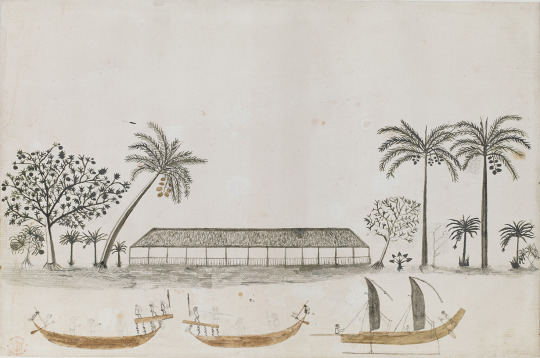

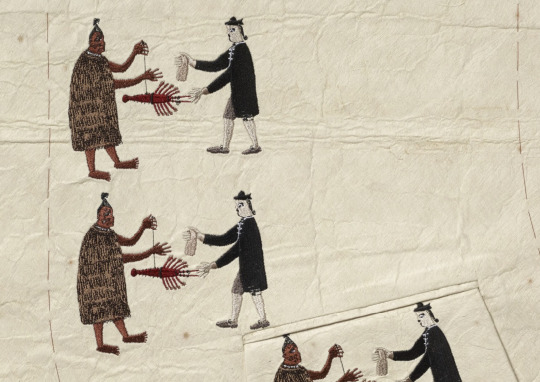
Tupaia, Longhouse and Canoes in Tahiti (1769) and Maori trading a crayfish with Joseph Banks (1769)
Jo Storr, Detail from Tupaia's Paintbox - Barter (2005)
1 note
·
View note
Text
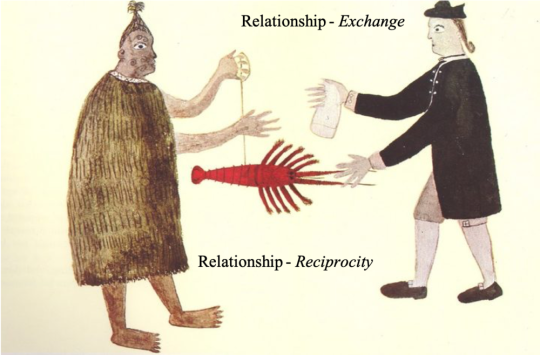
Image Citation: "A Māori man and Joseph Banks exchanging a crayfish for a piece of cloth", drawing by Tupaia, c. 1769 (British Library) Photo: Public domain. Also on Nile & Clerk 1996
"The sanctified universe of obligation — that circle of people with reciprocal obligations to protect each other whose bonds arose from their relation to a deity or a sacred source of authority" (Wynter, "No Humans Involved," 44)
MM
0 notes
